For analog signals where the distance between source and ADC is significant (let's say for a practical example 1 meter of 28 awg wires), is it better to buffer the signal on the source side? Or does it not really matters?
-
1It depends what is the analog signal source and what is the ADC input and sampling rate and how noisy environment there is. With information given, it can't be determined if buffering is needed or irrelevant. – Justme Oct 23 '21 at 09:17
2 Answers
Is a buffered signal less prone to interference?
Interference is generally a phenomena that occurs between the thing that transmits the signal and, the thing that receives the signal. This usually means that buffering the sending-end can be ineffective. It also means that buffering the receiving end can also be ineffective. The best first thing to do is "balance" your signal.
Unbalanced signals are prone to interference: -
The most effective method of reducing interference is using a balanced transmission method i.e. use two wires twisted together being fed from similar impedances at the sending-end then, using a differential receiving circuit at the receiver. Adding a shield to the twisted-pair cable adds another level of interference prevention.
Balanced signals are less prone to interference: -
Single-ended signals can be made to be balanced: -
Of course, if the signal you wish to transmit is very small in amplitude, it helps to amplify it before sending it but, not using a balanced transmission system is usually the main reason for poor performance.
- Differential vs non-inverting op amp advantage
- Common mode noise rejection and grounding instrument current transformer
- Effects of increasing current on external noise and SNR for analog transmission
- Purpose of inverted channel for UART bus communication
- 'true' balanced audio?
- Would twisting 3 wires together be as effective (or close) to a twisted pair?
- 434,556
- 28
- 351
- 777
-
Thanks for this explanation. Since the buffering lower the source impedance, it should help to balance the pair or am I wrong? – Tanguy Oct 23 '21 at 11:03
-
@Tanguy not really. Using resistors is the best way to provide a balanced impedance. See the last diagram in my picture where the two resistors are labelled "equal value". You then still have to provide a balanced impedance at the receiver too AND use a proper differential amplifier to cope with common mode noise interference. – Andy aka Oct 23 '21 at 11:17
In my opinion, the answer is yes, buffering and/or amplification is almost always helpful and reduces the impact of interference, and should be done as close to the source as possible. In addition, you need to consider the cabling and load impedance because these also have a large effect on interference.
The buffer should be designed so it can drive the load impedance which will probably be 50 or 75 Ohms for coaxial cable, or around 110 Ohms for twisted pair. You should use a termination resistor at the load if necessary to match the impedance of the cabling. When noise is a concern, the cabling is very important. I would always try to use either twisted pair or coaxial cable if possible. Ribbon cable can also work well if the signal wire runs alongside GND on both sides. Coaxial cable is much better than twisted pair for rejecting noise.
If the signal is already high amplitude and has a low source impedance, then there is little to be gained from amplifying or buffering it.
But if the signal is faint or comes from a high impedance source, you will see improved immunity or improved SNR from buffering it (and possibly amplifying it with a low-noise amplifier) before you send it over a long wire to a receiver.
Video buffer IC's may be a good option for signals with high impedance but which do not require much amplification.
Why is this so? The mechanisms that lead to interference typically are power limited. The lower the impedance of the cable and receiver, the lower the amplitude of the noise coupling. The noise signal simply doesn't have enough power to excite much response in a 50 Ohm load. As noted earlier, you should be using a low load impedance. For this reason, you may need to buffer a signal which is not capable of driving 110 Ohms or 75 Ohms or 50 Ohms directly.
For weak RF signals, the cable losses between the antenna and the receiver are directly subtracted from the SNR of the signal. So the best practice is to place a low-noise amplifier (LNA) close to the receive antenna. If the cable loss between the antenna and receiver is only a fraction of a dB then it doesn't really matter. But if the cable loss is substantial and you need to detect faint signals, then the LNA can help.
- 28,915
- 1
- 28
- 81


